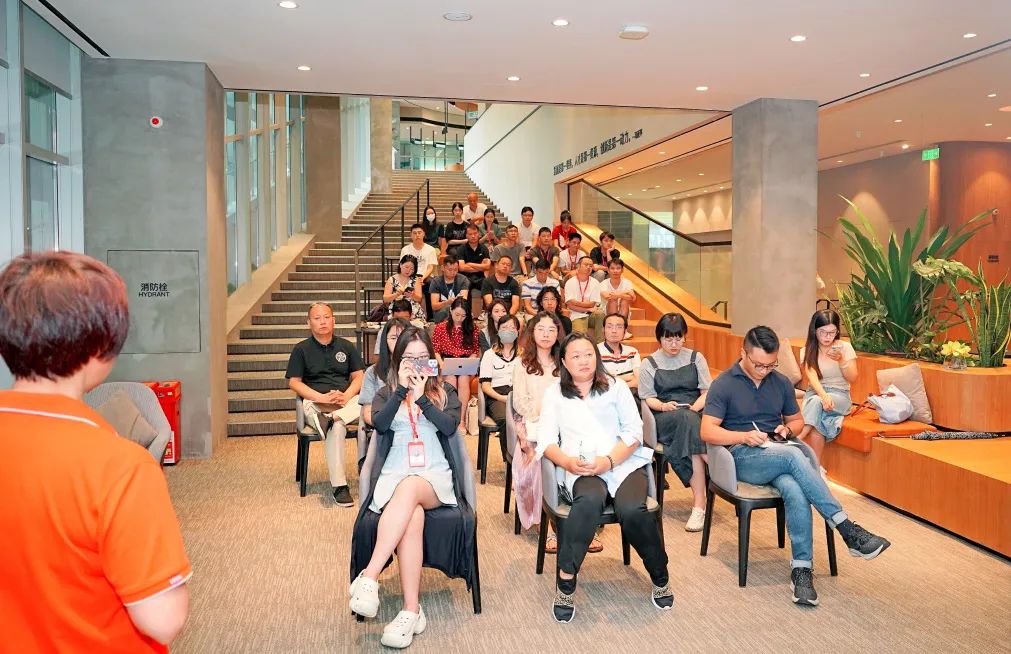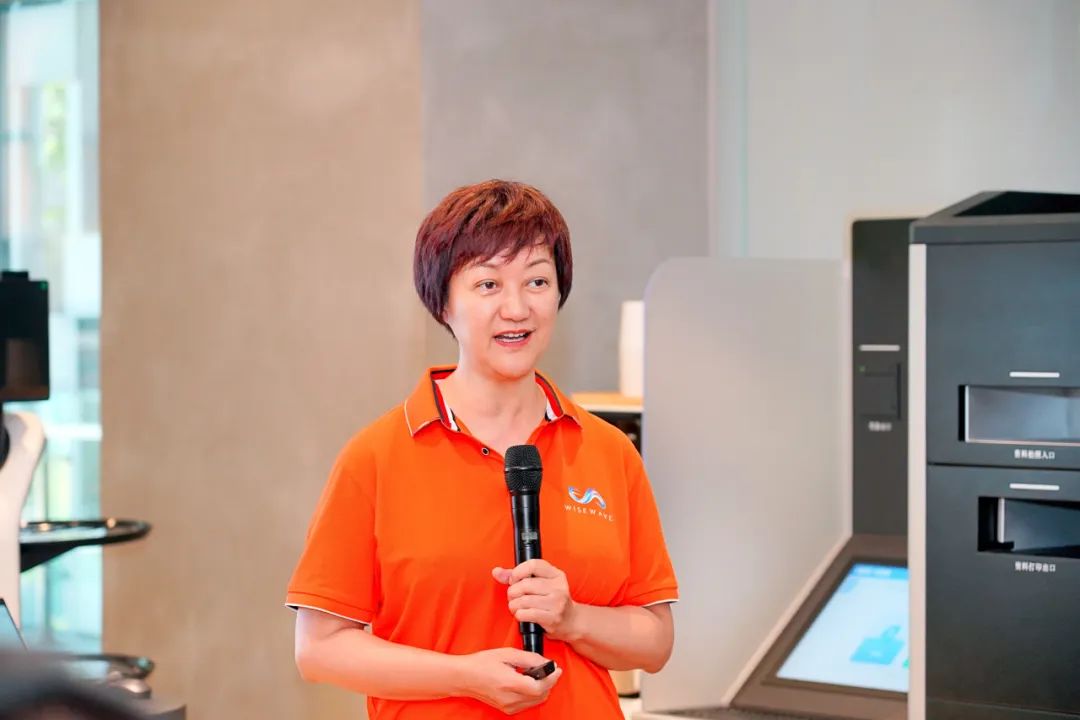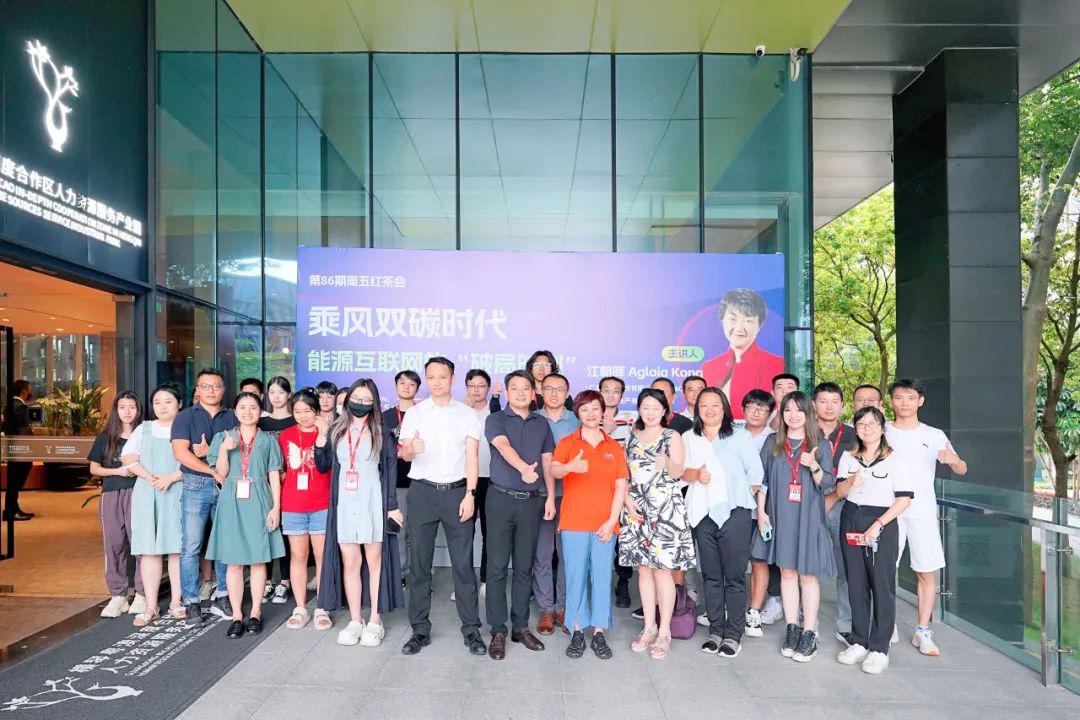Dr. Aglaia Kong shares insights on energy
internet development opportunities amid dual carbon goals

On July 28th, Dr. Aglaia Kong, the founder, CEO, and CTO of Guangdong LeapFive Technology Co., Ltd. (hereinafter referred to as “LeapFive”), was invited to participate in the 86th high-level talent exchange meeting and “Friday Tea Forum” organized by the Economic Development Bureau of Hengqin and hosted by Zhuhai Da Heng Qin Development Co., Ltd.
With the theme “Embracing the Carbon-Neutral Era: The Turning Point of Energy Internet.” Dr. Aglaia Kong shared her insights on the development opportunities and challenges of the energy internet development under the dual carbon goals.

Significant growth in demand for intelligent control
In recent years, under the implementation of the “Dual Carbon” targets, the energy industry has entered a new round of development ear. Breaking the bottleneck of future energy supply and improving the resilience of the industrial chain and supply chain have become important research topics for related industries. “The essence of carbon neutrality is the energy revolution that replaces carbon-based energy with silicon energy, and this inevitable revolution will bring enormous demand and opportunities,” said Dr. Aglaia Kong.
Dr. Kong believes that in the context of the “Dual Carbon” target, various industries are undergoing significant transformations. Clean energy sources such as photovoltaic, wind power, and hydropower are limited by natural conditions and struggle to provide stable support to the power system. Consequently, there is a substantial increase in demand for intelligent control solutions.
“How to ‘peak shift’ and solve the energy storage challenges to enhance the stability of renewable energy supply have become critical issues. This presents a crucial development opportunity for the energy internet,” Dr. Aglaia Kong explained. The energy internet aims to connect billions of devices, machines, and systems from energy production, transmission to consumption through the construction of sensing, control, and application software and hardware infrastructure. It prioritizes renewable energy and electricity as the foundation, achieving a balance among multiple energies and supply-demand coordination to find the equilibrium point of the “energy impossible triangle.”
Facing the demands and opportunities brought by the carbon neutrality revolution, digitalization has gradually become the major trend for new energy system companies, with chip technology as the core.
“All electronic device requires a brain, which is lacking in China. If we can solve this problem, we can achieve the independence of CPUs,” said Dr. Aglaia Kong, who has been focusing on using the RISC-V architecture to address the “bottleneck” of China’s industrial development since she returning to China in 2018.

Cooperation zone hits “acceleration” for enterprises growth
In 2020, Dr. Aglaia Kong founded LeapFive, focusing on the research and development of System-on-Chip (SoC) products based on the RISC-V open instruction set architecture. Its products mainly target industries such as Industrial Internet of Things (IoT), security, and other sectors, as well as providing full stack underlying intelligent software services from operating systems to cloud platforms.
Dr. Aglaia Kong believes that the essential requirements for industrial chips are firstly, whether they can bring supply chain security to users; secondly, whether they possess differentiated characteristics to solve various pain points for customers in system operation; and thirdly, cost advantages. “RISC-V, as an open-source instruction set architecture, provides a significant opportunity to achieve China’s independent and controllable chips and enhance its capacity for independent innovation,” Dr. Aglaia Kong stated.
To further capture development opportunities, in 2023, Dr. Aglaia Kong decided to relocate LeapFive’s headquarter to the Guangdong-Macao In-Depth Cooperation Zone in Hengqin (hereinafter referred to as “Cooperation Zone”). Dr. Aglaia Kong explained, “The Cooperation Zone is adjacent to Macao, allowing rapid access to international industry frontiers. Moreover, it facilitates better connections with resources and the recruitment of top talents in chip design from Macao’s higher education institutions.”
Last year, LeapFive officially launched a brand-new RISC-V SoC product called NB2. NB2 is a high-end industrial application-oriented RISC-V SoC chip, serving applications in intelligent energy, smart logistics, smart cities, and smart factories in the industrial IoT field. It is currently the industry’s first high-end intelligent processor product based on the RISC-V architecture.
The “Friday Tea Forum” was spent in a relaxed and joyful atmosphere, friends from all sessions exchanged ideas and inspired each other, from the first acquaintance with LeapFive, now more friends have gained new knowledge of LeapFive, and we believe that in the near future, LeapFive and all others will work together to inject more “core” power into the development of Cooperation Zone.

